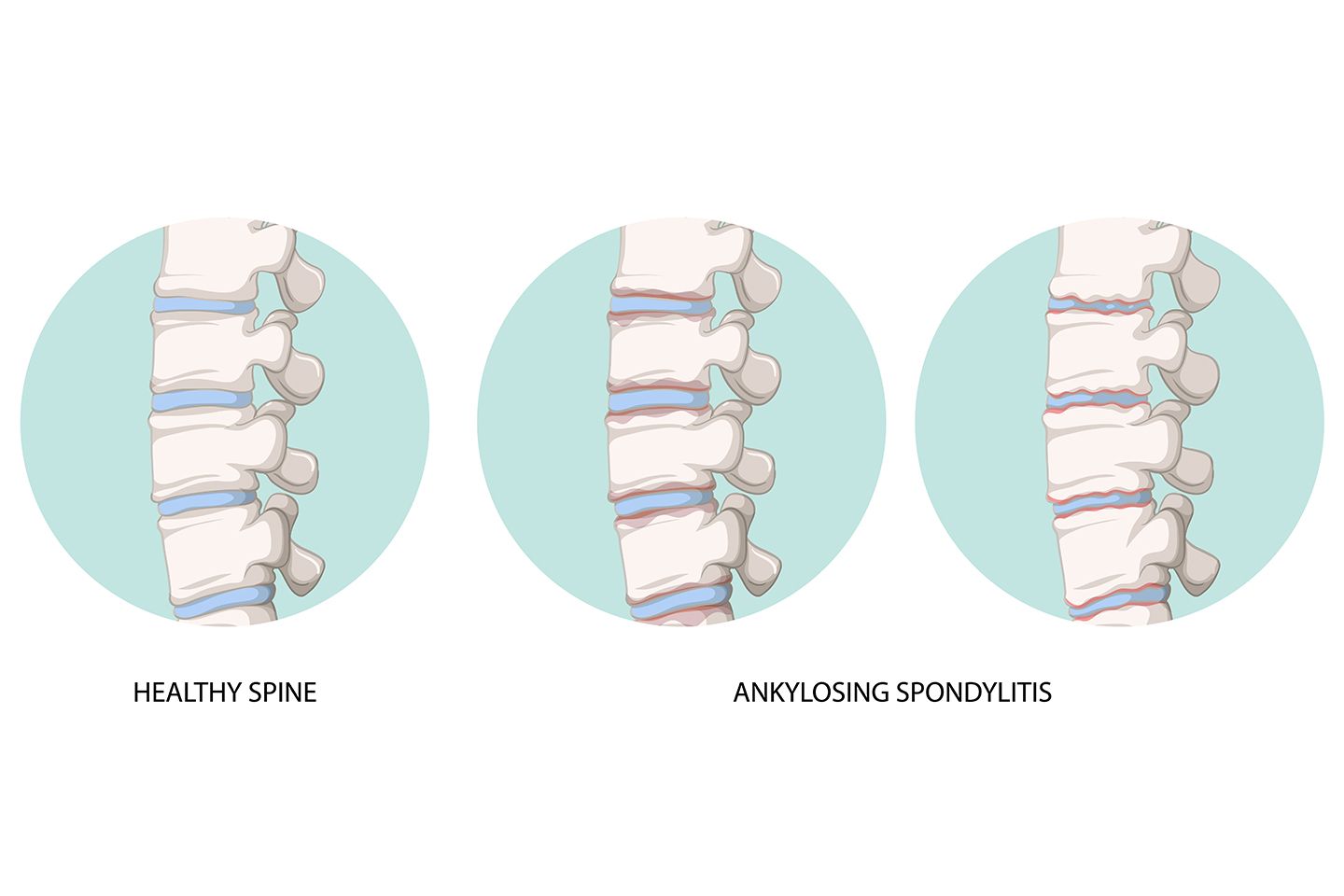
Different Types of Spondylitis
What is spondylitis?
Spondyloarthritis, commonly known as spondylitis, is the umbrella term used for a group of arthritic conditions that affect the bones in the spine and may also affect the legs, hips, and arms. There are different types of spondylitis that can also extend to the skin, eyes, and intestines. Any type of spondylitis should not be taken lightly because if left untreated and ignored, it can cause significant impairment in day-to-day activities and impact one's quality of life.
Further, if the condition aggravates with time, it can also affect one's bone health. Spondylitis should not be confused with spondylosis, though both conditions can cause back and joint pain. Spondylosis, also called spinal osteoarthritis, is age-related arthritis that leads to degeneration of the spinal structure. It usually affects older people above the age of 60 years. Chronic neck pain, which can be mild or severe and stiffness are usually associated with this condition.
Types of spondylitis
Different types of spondylitis target different areas of the body-
- Ankylosing spondylitis: Ankylosing spondylitis causes chronic inflammation in the spine and can begin anywhere around the teenage years to young adulthood. It's also known to affect men more than women. Spinal fusion, where there is the unwanted formation of bone spurs, can also occur, leading to stiffness and hindrance in mobility. Back pain, fatigue, and inflammation in the joints are recognised as primary symptoms.
- Psoriatic arthritis: Psoriatic arthritis is related to a common skin condition, psoriasis, that causes the skin to be red, patchy, and scaly. This is inflammatory arthritis that can make the joints ache and swell. The swelling, stiffness and pain, known as "flare-ups," can come and go.
- Enteropathic arthritis: Also known as Enteropathic arthropathy, it is associated with inflammatory bowel disease (IBD) like ulcerative colitis and Crohn's disease. It causes inflammation in the intestines. Along with the symptoms of IBD, one may also have arthritic symptoms like joint inflammation. Other symptoms include weight loss, chronic diarrhea, bloody stool, and abdominal pain.
- Reactive arthritis: Reactive arthritis is a condition that occurs in large joints like knees,ankles, and spine, as well as small joints like hands and toes. This usually happens in response to an infection like chlamydia in the genitals (a sexually transmitted disease), or a bacterial infection anywhere in the urinary tract, bowels, skin, joints, and eyes.
- Juvenile spondylitis: Juvenile spondylitis refers to a group of rheumatic diseases that occur around 16 years or earlier. These diseases can be Enteropathic arthritis, Undifferentiated spondyloarthritis, Psoriatic arthritis, Reactive arthritis, or Juvenile Ankylosing spondylitis. Some common symptoms include joint pain and tenderness in the lower body, bowel issues, and fatigue.
Undifferentiated spondylitis: Undifferentiated spondylitis is the tag given when there are various rheumatic symptoms but they do not fall into one specific category. The patient can experience any or all issues like – fatigue, swollen hands and feet, back pain, eye issues, and pain in both large and small joints.
Spondylitis can also be classified according to where it happens in the body. Based on this, these are the two types of spondylitis:
- Axial spondyloarthritis: Takes place at the body's "axis" or the central parts like the spine and the sacroiliac joints (these link the lower spine and the pelvis together). This condition can also affect other parts of the body. This disease is usually hereditary and can manifest anytime between young and middle adulthood. The most common symptoms are pain in the lower back, buttocks, and hips.
- Peripheral spondyloarthritis: As the name suggests, this type of spondylitis affects the peripheral areas of the body, like hands, feet, ankles, shoulders, wrists, and knees.
Diagnosis
There is no definitive test that can identify any type of spondylitis. Here is what one can expect upon a visit to the doctor:
- Medical history: The doctor will go through the list of symptoms, when they began and how long they have existed. The doctor will also ask whether there is a family history of spondylitis.
- Physical examination: The doctor will have to investigate the patient for any overt swelling and tenderness or the movement of the joints to confirm the presence of the disease.
- Blood tests: This will be followed by other diagnostic tests like blood work and genetic tests because the presence of the HLA-B27 gene can contribute to this disease. Blood tests or testing fluids from the joints can also help detect any body-wide inflammation.
- Imaging tests: The doctor may order tests like an MRI, X-Rays, and ultrasound to detect swelling and inflammation that is not visible to the naked eye.
Treatment
Spondylitis is identified as an autoimmune disease, so it does not have a definitive cure. Some of the treatment options that are common to treat most types of spondylitis are:
- Physical therapy to improve spinal and joint mobility and develop strength.
- Medication like nonsteroidal anti-inflammatory drugs (NSAIDs) to decrease joint pain, stiffness and swelling, as well as disease-modifying ant rheumatic drugs (DMARDs) to slow down the onset of arthritis and joint damage.
- Daily exercises to practice by oneself to sustain mobility and remove stiffness.
- Alternative or holistic therapies like massage, acupuncture, cupping therapy and yoga may also be helpful.
In the case of severe joint damage, joint replacement surgery can happen. - Otherwise, joint damage can be repaired through arthroscopic surgery, a minimally invasive technique.
Meril Life has some useful instruments to offer doctors and surgeons in case of surgical intervention needed due to spondylitis. One of them is the LATITUDTM HIP REPLACEMENT SYSTEM.
LATITUDTM HIP REPLACEMENT SYSTEM
Acetabular Cup System & Uncemented Stems
- The Acetabular Cup System is a modular acetabular replacement system consisting of a range of Titanium coated modular shells. The design geometry of the shell allows press fit to occur just below the acetabular bone margin to assist retention and stability.
- Cement less femoral stem is provided in two different angles to meet with the patient’s anatomy.
LATITUDTM HIP REPLACEMENT SYSTEM is used in the case of hip replacement, where the damaged joint is completely removed and the surgeon puts a prosthetic joint in its place. This procedure is done on patients of any age from youngsters with juvenile arthritis to geriatric patients.
Final note
Spondylitis may be an autoimmune disease with no cure. It can degenerate daily functioning and joint mobility, but it is controllable. Different types of spondylitis can manifest in different body parts; their onset also depends on the patient's age. If the detection and diagnosis are made early, the doctor can design a specific treatment course for the patient to manage symptoms, alleviate pain, and maintain a relatively better quality of life. Spondylitis is not usually treated with surgery unless the progression has caused significant joint damage.



